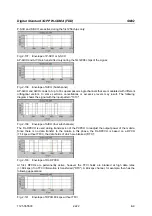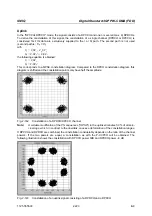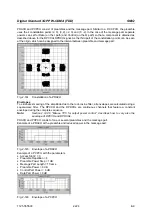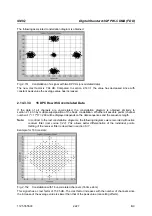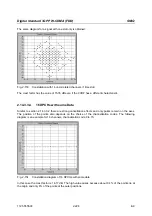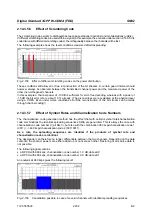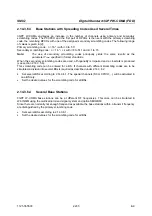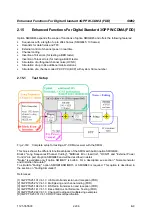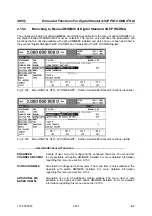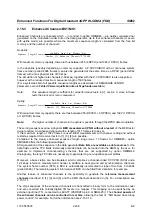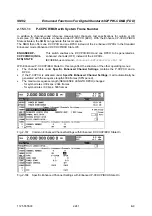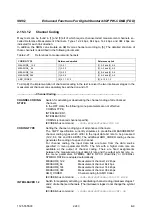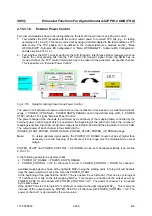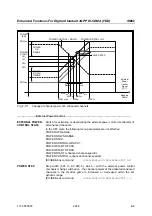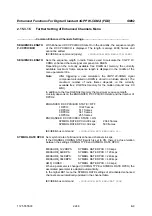
Digital Standard 3GPP W-CDMA (FDD)
SMIQ
1125.5555.03
E-9
2.234
2.14.3.6 Simulation of Special Scenarios
It is shown in the following how special scenarios can be simulated by means of WinIQSIM parameters.
The downlink is used as an example, since a mobile station can always be completely implemented in
an MS. Scenario for the simulation of several base stations 2.14.3.6.4 can also be applied to the
simulation of mobile station signals.
Note:
Section 2.14.2.2 describes a particularly simple method for setting a base station.
2.14.3.6.1
Standard Base Station
A standard base station is the easiest example of a base station.
•
Activate the channels P-CPICH, P-SCH, S-SCH and P-CCPCH (State = ON). These channels are
absolutely necessary for the synchronization of a mobile station with the signal.
•
Activate between 0 and 128 DPCHs.
•
Select channelization codes and symbol rates so that no code domain conflicts occur.
•
Use timing offset in channels to model the offsets T
DPCH
, T
PICH
, T
S-CCPCH
( [1], section 7) as specified
in the 3GPP W-CDMA standard.
•
Set a valid combination of scrambling code and 2
nd
Search Code Group. (For details refer to [2] 5.2.2)
In [3], Appendix D, a few test models are specified that have been designed for certain tests. These
scenarios are supplied as WinIQSIM setups.
They can be found in the 3GPP W-CDMA - TEST MODELS menu.
2.14.3.6.2
Base Station with More Than 128 DPCHs
To avoid the channel table becoming ambiguous, a BS in WinIQSIM may contain a maximum of 128
DPCHs. If a base station is to be simulated with more than 128 DPCHs, these channels have to be
distributed to several BS.
•
Make the same settings as in section 2.14.3.6.1 for the first BS.
•
Assign the remaining DPCHs to the other BSs.
•
Select the channelization codes and symbol rates so that no code domain conflicts occur, even
beyond the limits of a BS.
Note:
The SMIQ does not support code domain power (conflict) display beyond the limits of a
MS/BS. If several stations are available it is useful to divide the available range in
subranges (e.g. BS1 : 0 to 256, BS2 : 257 to 467, BS3: 468 to 511).
•
Set the same value and type for the scrambling code for all BSs.
Note:
The function “Copy BS/MS“, as described in section 2.14.3.6.1 facilitates the transfer of
these values from one BS to another.



